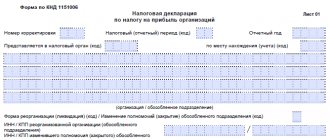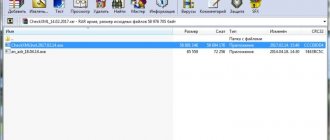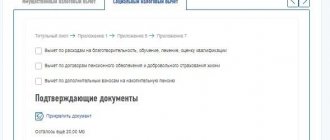New report form
The Federal Tax Service of Russia, by order dated December 8, 2020 No. KCh-7-3/ [email protected], updated the form and procedure for submitting a tax return for mineral extraction tax.
The amendments were required in connection with significant changes to the Tax Code on mineral extraction tax, which entered into force on 01/01/2021. Along with the report form, completion rules and electronic format were approved. Among the significant changes:
- A new procedure for transferring mineral extraction tax to the budget and determining the tax base for natural diamonds weighing more than 10.80 carats. The tax base for such stones is determined based on their sales prices excluding VAT, but not lower than their initial assessment.
- If the status of a participant in a regional investment project is terminated by a court decision, the taxpayer loses the right to apply a coefficient Ktd less than 1 from the tax period in which it was first applied.
- The value of mined precious stones is assessed on the basis of the taxpayer’s weighted average sales price in the tax period excluding VAT, but not lower than their initial assessment carried out in accordance with the legislation on precious metals and precious stones. If there are no sales in the tax period, the data of the nearest 12 previous months are taken into account.
IMPORTANT!
The order will come into force two months after publication - 03/15/2021. The declaration in the new form must be submitted for the tax period following the month the document entered into force - April 2021. Therefore, for January-March 2021 it is necessary to report on the previous declaration form. The deadline for submitting the mineral extraction tax for December 2021 is until 02/01/2021 (January 31, 2021 - Sunday).
Section 4
Section 4 is completed when extracting hydrocarbon raw materials from a new offshore hydrocarbon raw material field separately for each type of mineral.
Line 010 indicates one of the codes for the type of mineral extracted:
- 03100 – dehydrated, desalted and stabilized oil;
- 03200 – gas condensate from all types of hydrocarbon deposits, which has undergone field preparation technology in accordance with the technical project for field development, before being sent for processing;
- 03300 – flammable natural gas from all types of hydrocarbon deposits, with the exception of associated gas;
- 03401 - associated gas produced from new offshore hydrocarbon fields.
Line 020 indicates the BCC, in accordance with which the tax is paid in respect of this extracted mineral. If line 010 contains code 03401, then zeros are entered here.
Line 030 indicates the code of the unit of measurement of the amount of extracted minerals according to OKEI. You can find these codes in the previous subsection. (make a link to the subsection “Section 3”).
Line 040 indicates the OKTMO code in whose territory the tax is paid, and line 050 indicates the series, number and type of license for the right to use subsoil.
Line 060 indicates the name of the new offshore hydrocarbon deposit in accordance with the license.
Line 070 reflects the month and year of the start of industrial production of hydrocarbons, in accordance with paragraph 6 of Article 338 of the Tax Code.
Column 1 contains the code for the basis for taxation of extracted minerals. It is given in Appendix 3 to the Procedure for filling out the declaration.
Column 2 indicates the amount of extracted minerals subject to taxation at the tax rate corresponding to the code entered in column 1. This indicator is determined accurate to the third decimal place.
Line 080 indicates the cost of a unit of extracted minerals, calculated in accordance with Articles 340 and 340.1 of the Tax Code. It is rounded to the second decimal place. If during the tax period for which the declaration is being filled out, hydrocarbon raw materials were not sold, then a dash is placed here.
Line 090 reflects the minimum marginal cost of a unit of hydrocarbon raw materials. It is calculated in the manner prescribed by Article 340.1 of the Tax Code.
Line 100 indicates the amount of sold extracted minerals, and line 110 indicates the proceeds from the sale. Line 120 indicates the adjusted revenue from the sale of extracted minerals based on paragraph 6 of Article 105.3 of the Tax Code. If there was no implementation, then a dash is placed in lines 100-120
Line 130 indicates the tax base for the extracted minerals. In general, this indicator is determined for each type of mineral using the formula:
| Line 130 | = | Column 2 | X | Line 080 |
There are three cases where a different formula is used to calculate the line 130 indicator:
- if the cost of a unit of extracted minerals, determined in accordance with Article 340 of the Tax Code, is less than its minimum marginal value, calculated in accordance with Article 340.1 of the Tax Code;
- if the taxpayer, on the basis of paragraph 5 of Article 340.1 of the Tax Code, determines the cost of the extracted mineral resource based on the minimum marginal cost of a unit of the extracted mineral resource;
- if the taxpayer does not sell hydrocarbons during the tax period (clause 6 of Article 340.1 of the Tax Code).
In these cases, the following formula is used:
| Line 130 | = | Column 2 | X | Line 090 |
Line 140 indicates the amount of calculated tax on the extracted minerals. It is calculated like this:
| Line 140 | = | Line 130 | X | Tax rate (clause 2.1 of article 342 of the Tax Code of the Russian Federation) |
When filling out section 4 for associated gas (if code 03401 is indicated in line 010), a zero is entered on lines 130 and 140.
Line 150 indicates the adjusted amount of calculated tax based on paragraph 6 of Article 105.3 of the Tax Code. If this indicator is missing, then a dash is placed here.
Who is obliged to take
Mineral miners and subsoil users are required to report on their mining activities. The category of accountable persons includes all payers of this tax: both organizations and individual entrepreneurs. Such taxpayers require a license allowing the use of subsoil.
From the moment of registration as a mineral miner and after receiving a license, monthly reporting must be generated. Until registration as a MET taxpayer, a report is not submitted. The Tax Code of the Russian Federation specifies whether it is necessary to submit a tax return for mineral extraction tax if the use of subsoil is temporarily suspended - yes, you will still have to report on the production tax (Chapter 26 of the Tax Code of the Russian Federation).
Types of extracted minerals
For tax purposes, extracted mineral resources are recognized as products of the mining industry and quarrying, contained in mineral raw materials (rock, liquid and other mixtures) actually extracted from the subsoil (waste, losses), the first in quality corresponding to the national standard, regional standard, international standard, and in case of their absence - to the organization’s standard.
The types of extracted minerals are:
- oil shale;
- coal (anthracite, etc.);
- peat;
- hydrocarbon raw materials (including oil, gas, gas condensate, methane);
- marketable ores of ferrous, non-ferrous and rare metals;
- multicomponent complex ores;
- useful components of multicomponent complex ore, extracted during further processing;
- mining chemical non-metallic raw materials (apatite-nepheline and phosphorite ores, potassium, magnesium and rock salts, boron ores, sodium sulfate, sulfur, barites, asbestos, iodine, bromine, fluorspar, earth paints (mineral pigments), carbonate rocks and others );
- mining non-metallic raw materials (abrasive rocks, vein quartz, quartzites, carbonate rocks for metallurgy, quartz-feldspathic and siliceous raw materials, glass sands, natural graphite, talc (steatite), magnesite, talc-magnesite, pyrophyllite, mica-oscovite, mica-phlogopite , vermiculite, refractory clays for the production of drilling fluids and sorbents, others);
- bituminous rocks;
- raw materials of rare metals (scattered elements) - in particular, indium, cadmium, tellurium, thallium, gallium;
- non-metallic raw materials used mainly in the construction industry (gypsum, anhydrite, natural chalk, dolomite, limestone flux, limestone, limestone, natural building sand, pebbles, gravel, sand-gravel mixtures, building stone, facing stones, marls, clays, other);
- qualified product of piezo-optical raw materials, especially pure quartz raw materials and semi-precious stone raw materials (topaz, jade, jadeite, rhodonite, lapis lazuli, amethyst, turquoise, agates, jasper and others);
- natural diamonds, other precious stones from primary, alluvial and man-made deposits, including rough, sorted and classified stones (natural diamonds, emerald, ruby, sapphire, alexandrite, amber);
- concentrates and other intermediate products containing precious metals (gold, silver, platinum, palladium, iridium, rhodium, ruthenium, osmium) obtained during the extraction of precious metals:
- natural salt and pure sodium chloride;
- underground waters containing minerals (industrial waters) and (or) natural healing resources (mineral waters), as well as thermal waters;
- raw materials of radioactive metals (in particular, uranium and thorium).
More on the topic What to do in case of an accident with a pedestrian?
Responsibility in 2020 More details (Clause 2 of Article 337 of the Tax Code of the Russian Federation)
The tax amount is calculated based on the results of each tax period (month) for each mineral extracted.
On the 25th day of the month following the expired tax period The amount of tax payable at the end of the tax period is paid no later than the 25th day of the month following the expired tax period.
The tax is payable to the budget at the location of each subsoil plot provided to the taxpayer for use.
The amount of tax calculated for minerals mined outside the territory of the Russian Federation is subject to payment to the budget at the location of the organization or the place of residence of the individual entrepreneur.
Budget revenue classification codes
Due dates
All subsoil users have a single deadline for submitting declarations for subsoil use - monthly, on the last day of the month following the reporting period. That is, submit the declaration for January by February 28 (in 2021 - by March 1), the report for February - by March 31, and so on until the end of the year. If the last day of the month falls on a non-working day, the deadline is transferred to the first working day.
| Reporting period | Deadlines for submitting subsoil reports to the tax office in 2021 |
| For December 2020 | February 1 (01/31 - Sunday) |
| For January 2021 | March 1 (28.02 - Sunday) |
| For February | March 31 |
| For March | April 30 |
| For April | May 31 |
| For May | 30 June |
| For June | August 2 (July 31 - Saturday) |
| For July | August 31 |
| For August | September 30th |
| For September | November 1 (October 31 - Sunday) |
| For October | November 30th |
| For November | January 10, 2021 (December 31 is a non-working day) |
| For December 2021 | January 31, 2022 |
Where to take it
Taxpayers submit a declaration on the use of subsoil to the territorial offices of the tax inspectorate. Here's where to submit your mineral extraction tax declaration in 2021:
- for institutions that are large taxpayers (code 213 on the title page) - to the interdistrict tax office;
- for other taxpayers (code 214 on the title page) - to the Federal Tax Service at the place of registration;
- for foreign enterprises operating through Russian representative offices - at the place of operation.
A number of organizations enter into production sharing agreements. Participants in such an agreement are not provided with the opportunity to submit a mineral extraction tax declaration.
Mineral extraction tax declaration form
Since mid-2015, a new mineral extraction tax declaration form has come into force under the number KND 1151054, which was approved by the relevant order of the Federal Tax Service. At the same time, the form that was valid until that time ceased to be used.
The new declaration, unlike the previous form, began to contain a larger number of sections. Such changes are due to the fact that taxpayers now have to calculate many more important indicators than before. However, this applies only to those mining companies that extract oil or gas condensate from fields. The calculation of the tax rate for these important types of raw materials has changed, which is why new sections had to be introduced.
Since the mineral extraction tax declaration has a common unified form for everyone, enterprises that extract other types of minerals do not fill out these sections.
The new approved declaration form contains the following chapters:
- Title indicating basic information of the payer;
- 1st section with the total calculated amount of tax payable;
- 2nd section with data for calculating the mineral extraction tax on oil;
- Section 3 contains data for calculating gas production tax;
- 4th section calculation of mineral extraction tax for developers of a new offshore field;
- 5th section with data for calculating the tax on other types of minerals;
- 6th section for determining the cost of a unit of raw materials;
- Section 7 is used to calculate the mineral extraction tax on coal.
In accordance with the approved procedure for filling out the declaration, there are several important rules that must be followed. Let's take a closer look at these rules, and also look at how each section of the declaration is filled out.
How to take it
As with any other report to the Federal Tax Service, the declaration on mining has two options for submission: on paper or electronically. The method of provision depends on the number of employees. If the institution employs up to 100 people, the report is submitted at the request of the taxpayer. This is a personal application to the Federal Tax Service or transfer of the register via telecommunication channels.
If a mining organization employs more than 100 people, it has no choice. The only available form of delivery is electronic.
How to fill
Mining reports include a title page and eight sections. Each paragraph corresponds to a separate type of extracted resource, therefore, the filling rules for each mineral are different. When entering information into report sections, follow a number of uniform rules. Here are general instructions for filling out in 2021 (the form is valid until April 2021):
- The report is completed for each period (month) separately. Factual information is provided for each month, rather than cumulative information.
- The declaration must only fill out sections with those minerals to which the enterprise is directly related to the extraction. If the taxpayer produces oil, then he generates information under section 2, if oil and gas, then the information is submitted under sections 2 and 3 of the mineral extraction tax. The remaining chapters are not completed.
- The report is provided only for minerals for which the production cycle has been completed. If a resource is under development, it is not reflected in the report.
- In each declaration, the title page and section 1, which accumulates data on mineral extraction tax, must be completed.
- Fill out all digital values and cost indicators according to the rules of the Federal Tax Service. Each cell contains separate information.
- All pages used are numbered in order. Leaving the field is unacceptable.
- Do not use correction fluid or correct errors manually.
When filling out the content of the mineral extraction tax, you must use the rules set out in Appendix No. 2 to Order No. MMV-7-3/827 and letters of the Federal Tax Service of Russia No. SD-4-3 / [ email protected] , SD-4-3 / [email protected] from 04/18/2019.
Section 3
Section 3 is intended for data that serves as the basis for the calculation and payment of tax in the production of combustible natural gas and gas condensate, with the exception of production at a new offshore hydrocarbon field. It is filled out separately for the BSC and separately for each type of mineral extracted.
Line 010 indicates the type code of the extracted mineral “03200” (gas condensate) or “03300” (combustible natural gas).
Line 020 indicates the BCC, in accordance with which the tax is paid in respect of this extracted mineral.
Line 030 indicates the code of the unit of measurement of the amount of extracted minerals according to the All-Russian Classifier of Units of Measurement OK 015-94 (OKEY):
| Code | Unit name | Symbol | |
| national | international | ||
| Volume units | |||
| 112 | Liter; cubic decimeter | l; dm3 | I; L; 3 |
| 113 | Cubic meter | m3 | m3 |
| 118 | Deciliter | dl | dl |
| Units of mass | |||
| 163 | Gram | G | g |
| 166 | Kilogram | kg | kg |
| 168 | Ton; metric ton (1000 kg) | T | t |
Line 040 indicates the amount of calculated tax on the extracted minerals. It is defined as the sum of the values of line 190 of all subsections 3.1.1 for all deposits related to the subsoil area, the details of the license for the right to use which are indicated in line 090 of subsection 3.1.
Line 050 indicates the value of the indicator characterizing the cost of transporting combustible natural gas (Tg). If the Tg indicator has a negative value, then in line 050 it is indicated with a minus sign. When filling out Section 3 for gas condensate, a dash is placed on line 050.
Line 060 indicates the coefficient characterizing the share of gas sales to Russian consumers in the total volume of gas (G) sold by the organization.
Line 070 indicates the coefficient characterizing the share of produced combustible natural gas (except for associated gas) in the total volume of produced hydrocarbons (Kgpn).
In subsection 3.1
you need to indicate the indicators (coefficients) used to calculate the tax on the subsoil plot. In this case, the amount of extracted mineral resources is reflected separately for each license for the right to use subsoil.
Line 080 indicates the OKTMO code on the territory of which tax is paid for this type of extracted mineral.
Line 090 reflects the series, number and type of license for the use of subsoil.
On line 100, the value of the degree of depletion of natural combustible gas reserves of a specific subsoil area (SVg) is indicated, accurate to the fourth decimal place.
Line 110 indicates the base value of the standard fuel unit (Eut) accurate to the fourth decimal place.
Line 120 indicates the value of the correction factor (Kkm). When filling out Section 3 on natural gas, a dash is placed on line 120.
Line 130 indicates the coefficient characterizing the share of produced natural combustible gas (except for associated gas) in the total amount of natural combustible gas (except for associated gas) and gas condensate produced in the expired tax period on a subsoil plot containing a hydrocarbon deposit (Dg) . Its value is determined to the fourth decimal place.
Subsection 3.1.1
is intended for data on the amount of minerals extracted from a subsoil plot, the details of the license for the right to use which are indicated in line 090 of subsection 3.1. It is filled out separately for each hydrocarbon deposit according to the state balance of mineral reserves approved in the year preceding the year of the tax period.
Line 140 indicates the full name of the specific deposit.
Line 150 indicates the depth of the hydrocarbon deposit. If it is indicated in the state balance of mineral reserves in the form of a range, then the minimum depth is indicated on line 150.
Line 160 displays the density in g/cubic meter. cm - for a gas condensate deposit, or gas density in air - for a natural combustible gas deposit.
Line 170 indicates the values of the coefficients Kvg, Kr, Kgz, Kas, Korz accurate to the fourth decimal place.
Line 180 indicates the value of the coefficient characterizing the degree of difficulty of extracting combustible natural gas and (or) gas condensate from hydrocarbon deposits (Kc). It is rounded to the fourth decimal place.
Line 190 indicates the amount of calculated tax. It is calculated according to the following rules.
If on line 010 of Section 3 the code 03200 (gas condensate) is indicated, and in column 1 of subsection 3.1.1 the tax base code “2000” is indicated, then:
| tax amount | = | column 2 of subsection 3.1.1 | X | tax rate | X | line 110 of subsection 3.1 | X | line 180 of subsection 3.1.1 | X | line 120 of subsection 3.1 | X | 0,7 |
If on line 010 of Section 3 the code 03200 (gas condensate) is indicated, and in column 1 of subsection 3.1.1 the tax base code “4000” is indicated, then:
| tax amount | = | column 2 of subsection 3.1.1 | X | tax rate | X | line 110 of subsection 3.1 | X | line 180 of subsection 3.1.1 |
If the code 03300 (combustible natural gas) is indicated on line 010 of Section 3, and “2000” is indicated in column 1 of subsection 3.1.1, then the tax amount is determined as follows:
| tax amount | = | (column 2 of subsection 3.1.1 | X | tax rate | X | line 110 of subsection 3.1 | X | line 180 of subsection 3.1.1 | + | line 050 section 3) | X | 0,7 |
If the code 03300 (combustible natural gas) is indicated on line 010 of Section 3, and “4000” is indicated in column 1 of subsection 3.1.1, then the tax amount is determined as follows:
| tax amount | = | column 2 of subsection 3.1.1 | X | tax rate | X | line 110 of subsection 3.1 | X | line 180 of subsection 3.1.1 | + | line 050 section 3 |
Then, in column 1, the code for the basis for taxation of extracted minerals is entered, in accordance with Appendix 3 to the Procedure for filling out the declaration.
Column 2 indicates the amount of oil extracted from the hydrocarbon deposit, subject to taxation at the tax rate corresponding to the tax basis code entered in column 1.
The amount of minerals extracted is determined accurate to the third decimal place.








